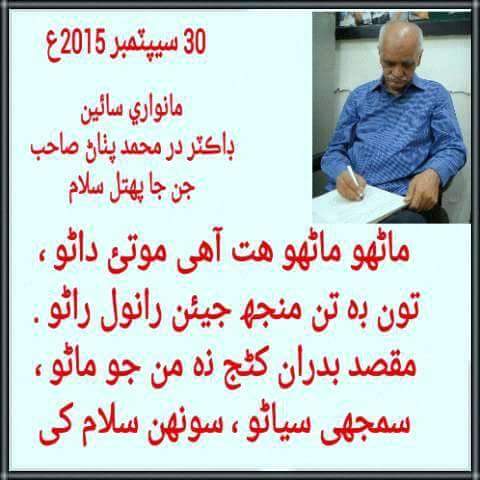Save the World Hertiage Sites in Pakistan
Dear Friends
Mohenjo-daro
Mohenjo-daro is an archaeological site located on the right bank of Indus River in Larkana District of Sindh. Dating back to the beginning of 3rd millennium BC, the 5000 year old city was one of the largest and earliest urbanised settlements in South Asia. The ruins were first discovered in 1922 and major excavations were carried out in 1930's, however after 1965 further excavations were banned due to weathering and disintegration. Only one-third of the site has been revealed so far and site conservation works have been on-going since then.
Taxila
Taxila is an archaeological site located in the Rawalpindi District, 30 km northwest of Islamabad. The city dates back to the Gandhara period and contains the ruins of the Gandharan city of ‘Taksasila’ which was an important Hindu and Buddhist centre, and is still considered a place of religious and historical sanctity in those traditions.
Takht-i-Bahi
Takht-i-Bahi, meaning spring throne, is a Buddhist monastic complex dating to the 1st century BC located on top of a 152 m high hill. The ruins are located about 16 km from Mardan and 80 km from Peshawar. Sahr-i-Bahlol is a small fortified city, dating from the same era, located near Takht-i-Bahi. The historical complex is a complete Buddhist monastery consisting of four main groups; the Court of Stupas, a monastic complex, a temple complex, and a tantric monastic complex.
Shalamar Gardens
The Fort and Shalamar Gardens in Lahore are two distinct royal complexes from the Mughal era. The Fort is located at the northwest corner of the Walled City of Lahore and has been destroyed and rebuilt several times during its history. The Shalamar Gardens are example of Mughal Gardens which were constructed by the emperor Shah Jahan in 1642. The gardens are influenced by Persian and Islamic traditions and cover 16 hectares of land area.
Makli
Makli is a necropolis in the archaeological city of Thatta dating back to 14th century. The monuments and mausoleums in Makli are built from high quality stone, brick, and glazed tiles representing the civilization of Sindh of the time. Tombs of famous saints and rulers including Jam Nizamuddin II are still preserved and are evidence of Hindu, Mughal, and Islamic architecture.
Rohtas Fort
Rohtas Fort is a garrison fort built by Sher Shah Suri, located about 16 km from Jhelum in Punjab, Pakistan. The fort is an exceptional example of Islamic military architecture, integrating artistic traditions from Turkey and the Indian subcontinent. It was built at a strategic location on a small hill alongside Kahan River to control the Ghakkars. Its name is derived from Rohtasgarh, the site of Sher Shah's victory in 1539 over a Hindu ruler.
Regards
Shoaib Habib Memon
Social Worker/Freelance Writer
Thatta Sindh Pakistan
Cell.0314 2090252
Mohenjo-daro
Mohenjo-daro is an archaeological site located on the right bank of Indus River in Larkana District of Sindh. Dating back to the beginning of 3rd millennium BC, the 5000 year old city was one of the largest and earliest urbanised settlements in South Asia. The ruins were first discovered in 1922 and major excavations were carried out in 1930's, however after 1965 further excavations were banned due to weathering and disintegration. Only one-third of the site has been revealed so far and site conservation works have been on-going since then.
Taxila
Taxila is an archaeological site located in the Rawalpindi District, 30 km northwest of Islamabad. The city dates back to the Gandhara period and contains the ruins of the Gandharan city of ‘Taksasila’ which was an important Hindu and Buddhist centre, and is still considered a place of religious and historical sanctity in those traditions.
Takht-i-Bahi
Takht-i-Bahi, meaning spring throne, is a Buddhist monastic complex dating to the 1st century BC located on top of a 152 m high hill. The ruins are located about 16 km from Mardan and 80 km from Peshawar. Sahr-i-Bahlol is a small fortified city, dating from the same era, located near Takht-i-Bahi. The historical complex is a complete Buddhist monastery consisting of four main groups; the Court of Stupas, a monastic complex, a temple complex, and a tantric monastic complex.
Shalamar Gardens
The Fort and Shalamar Gardens in Lahore are two distinct royal complexes from the Mughal era. The Fort is located at the northwest corner of the Walled City of Lahore and has been destroyed and rebuilt several times during its history. The Shalamar Gardens are example of Mughal Gardens which were constructed by the emperor Shah Jahan in 1642. The gardens are influenced by Persian and Islamic traditions and cover 16 hectares of land area.
Makli
Makli is a necropolis in the archaeological city of Thatta dating back to 14th century. The monuments and mausoleums in Makli are built from high quality stone, brick, and glazed tiles representing the civilization of Sindh of the time. Tombs of famous saints and rulers including Jam Nizamuddin II are still preserved and are evidence of Hindu, Mughal, and Islamic architecture.
Rohtas Fort
Rohtas Fort is a garrison fort built by Sher Shah Suri, located about 16 km from Jhelum in Punjab, Pakistan. The fort is an exceptional example of Islamic military architecture, integrating artistic traditions from Turkey and the Indian subcontinent. It was built at a strategic location on a small hill alongside Kahan River to control the Ghakkars. Its name is derived from Rohtasgarh, the site of Sher Shah's victory in 1539 over a Hindu ruler.
Regards
Shoaib Habib Memon
Social Worker/Freelance Writer
Thatta Sindh Pakistan
Cell.0314 2090252



